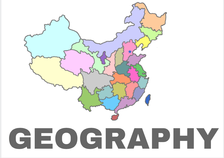Market research in china
|
By Rachel Wang Being the world's second largest economy, China is a hot market for the international goods and services. It has a unique culture and a constantly-changing market landscape. I’d like to share with you the fundamental insights that are critical to your research plan. It entails six aspects which are time, geography, people, methodology, research resources, and the internet.
Contact me if you have any question or would like to know more! LTH Business Consulting specializes in the Chinese market research & strategy. Send your project request to [email protected] Follow us at https://www.facebook.com/LTHconsulting Bibliography
2 Comments
By Rachel Wang If you are wondering what language to use in your next market research project in China, the quick answer is Mandarin (spoken) + Simplified Chinese (written) in the mainland China, Mandarin (spoken) + Traditional Chinese (written) in Taiwan, and Cantonese (spoken) + Traditional Chinese (written) in Hong Kong and Macau. Table 1: the common languages by region I thought all Chinese speak Chinese. You may wonder. What is Mandarin, Cantonese, Simplified Chinese, and Traditional Chinese? Well, read the following Chinese language insights, and you will be an expert. Mandarin Chinese is the dominant language in China Mandarin Chinese is the national language of China, and almost everyone speaks it. There are different Chinese dialects spoken in the land of China that people use for daily dialogue, but with Mandarin Chinese people can understand each other. It is like in the U.S.; people may speak Spanish, French, and Italian in their communities while most people speak English. Mandarin Chinese is the official language of the People’s Republic China. Over 90% of the urbanites and over 70% of Chinese speak Mandarin ("The Notice Of Checking Mandarin Status In The County Areas"). It was born out of the Beijing dialect of Chinese in 1923 and promoted nationwide as the standard Chinese ("Mandarin Chinese"). China has 130 languages, and Chinese alone has 7 regional dialect groups ("How Many Languages Are There In China"). Most of these languages and Chinese dialects are intelligible. It means people cannot understand each other if they speak different Chinese dialects. It is like how English is different from German. That is why the government started to promote Mandarin as the national language more than 60 years ago ("The Guideline Of Promoting Mandarin"). The exceptions, which part of China do not speak Mandarin Hong Kong and Macau keep their local dialect Cantonese as the main language. They were colonies of the UK and Portugal until 1997 and 1999 which explains the absence of Mandarin. Another group that does not speak Mandarin is the elders of ethnic Chinese. Hong Kong and Macau widely speak Cantonese, with 95.8% and 80.1% of the population respectively ("Hong Kong Population 2017 - DATA AND INFORMATION", 2017) ("DSEC - 2016 Population Statistics", 2017). Cantonese has over 1000 years of history and has been deeply rooted in the local culture. Before the return of Hong Kong and Macau to China, Mandarin was spoken by the minority Chinese in these territories. The use of Mandarin has started to grow ever since their reunion with the motherland. Employees of the public services are the first to pick up Mandarin. The local businesspeople extend the wave to greet their inbound customers. Parents are encouraging their kids to learn Mandarin so that they can find a good job in the future. According to the latest government census, there are 47.8% people in Hong Kong and 50.4% in Macau speak Mandarin ("Hong Kong Population 2017 - DATA AND INFORMATION", 2017) ("DSEC - 2016 Population Statistics", 2017). The ethnical groups of China account for 8.49% of the population and bring diversity to the nation’s language map ("2010 National Population Statistics", 2011). The 53 out of 55 of minority ethnical Chinese have their languages ("Chinese Languages," 2017). They live in provinces and autonomous regions like Inner Mogolium, Xinjiang, Tibet, Ningxia, Yunnan, Jilin, and Taiwan. They use their ethnic languages in everyday life. Most young people speak Mandarin, but not the case among the elders. Simplified Chinese is the dominant written language in China Simplified Chinese and Traditional Chinese are two versions of written Chinese. Simplified Chinese is the simple version of Traditional Chinese. Most Simplified Chinese characters are born out of the Traditional Chinese, and others inherit from ancient Chinese or create newly. Chinese characters are like pictures. Their shape and structure mimic the objects in real life. To be compared, English characters are more associated with the pronunciation. Take the word 口 (mouth), for example, isn’t it like the shape of the mouth? Look at the word 河 as if it were a drawing, You can tell it is related to water because the left part of this character contains three drops of water. Simplified Chinese and Traditional Chinese share the similar structure. Their difference is Simplified Chinese is with fewer strokes. Give you an example, the bird is 鳥 in Traditional Chinese and it becomes鸟 in the Simplified Chinese. Check the below chart for more examples. Can you find the resemblance? The Traditional Chinese writers can understand the Simplified Chinese instinctively, and the Simplified Chinese writers can understand the Traditional Chinese with some efforts. Thanks to the computer input applications, a person trained in either Simplified Chinese or Traditional Chinese can easily type in both digitally. Table 2: The comparison of Traditional Chinese and Simplified Chinese The Simplified Chinese was created by the People’s Republic of China (PRC) in 1954 ("Celebrating the 50th anniversary of the regulations of "Publishing the Simplified Chinese Plan" and "Promoting Mandarin," 2006). The government wishes to increase the literacy with this simple version of Chinese. Areas like Taiwan, Hong Kong, and Macau were away from the influence of the central government when the Simplified Chinese was heavily promoted nationwide. That is why they have not updated the Traditional Chinese with the Simplified Chinese yet. The last piece of reminding On top of being fluent in Chinese, respecting the regional culture is key to bond with locals. Every Chinese region has their unique cultural heritages. It could be the region’s history, the lifestyle, the personality, the local dialect, or the vocabularies that are exclusive to this territory. It will delight the locals if you express the admiration towards their culture. A simple trick is greeting them with the local dialect and ask them about their favorite local dishes. So much for today, my friend. If you have more questions about the market research in China, email me at [email protected] LTH Business Consulting specializes in the Chinese market research & strategy. Send your project request to [email protected] Follow us at https://www.facebook.com/LTHconsulting Bibliography
|
Tell us what you'd like to read about MR in ChinaFollow ushttps://www.facebook.com/LTHconsulting |
|
|
FOLLOW OUR FACEBOOK PAGEhttps://www.facebook.com/LTHconsulting
|
© 2017 LTH Business Consulting DOE ALL RIGHTS RESERVED









